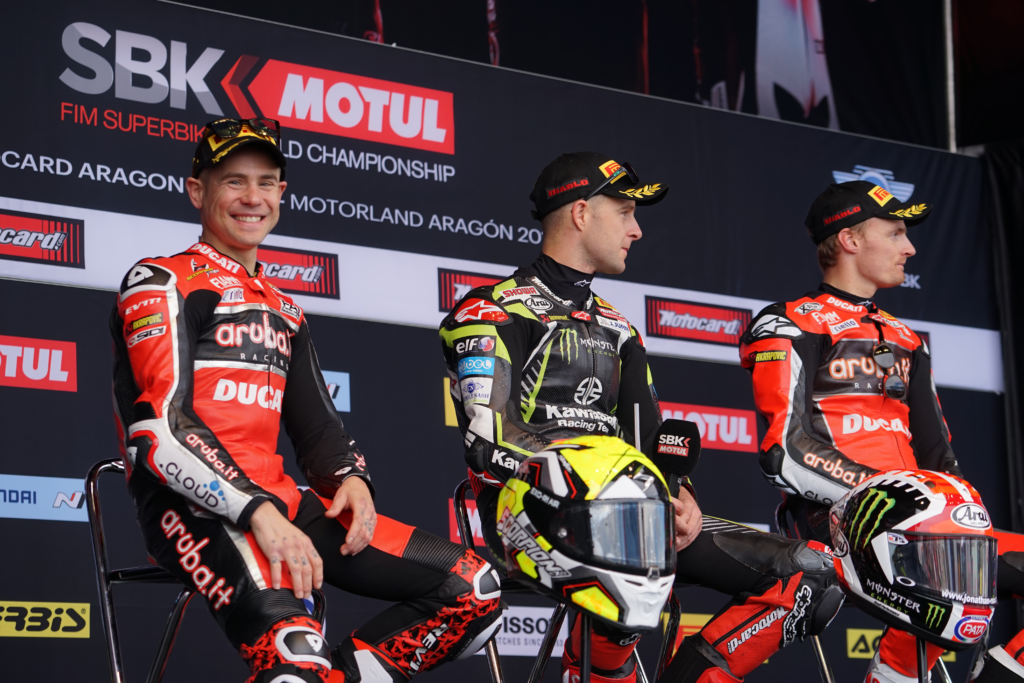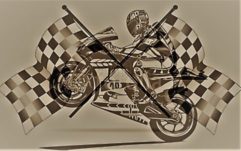
The curse of a consequential misdecision in WorldSBK and its aftermath
The performance difference between Alvaro Bautista’s Ducati and the rest of the field on the long straights of the Circuito de Cataluña near Barcelona and at the Autodromo do Algarve near Portimão could be seen by any layperson with the naked eye. When Jonathan Rea dominated the competition at will in his early days at Kawasaki from 2015, his motorcycle was immediately drastically slowed down by the FIM in terms of performance. There were speed reductions of exactly 1000 rpm less in one step, after only 3 superior race weekends. In addition, until 2018 the winner of the first race was moved back to 9th place on the grid for the second race. Since Ducati entered WorldSBK with the Panigale V4R, the Reds have never had anything like this. Even after Bautista had won 11 races in a row at the start of the 2019 season, the maximum speed allowed for his Ducati remained unchanged.

Scott Redding’s proposal to equalize
As the successor to the tiny and feather-light Spaniard, the Englishman was never able to benefit from the performance increase of the Panigale V4R to the same extent in the 2020 season and also in the following year. If you put the two pilots side by side, its weight disadvantage compared to the dwarf from Alavera de la Reina (about 120 km south-west of Spain’s capital Madrid) is obvious to every layman. For this reason, the BMW newcomer called for an equalizer at the beginning of this season. If Alvaro Bautista and the also small and light Michael Ruben Rinaldi were given a minimum weight, at least a good part of their advantage over the rest of the competition would be eliminated. But Dorna and FIM seem to want to do everything possible to ensure that the Italian brand can finally win a world title again. At least that’s how the majority of the bored spectators see it and now Bautista can almost only beat himself in the 2022 title race.

The judgment of Marco Melandri
The diminutive Italian found clear words for Ducati’s entry with the MotoGP Replica in 2019. For the man from Ravenna, this was a clear break in style in the near-series world championship. As a result, the Japanese manufacturers were increasingly forced to compete with actual racing replicas instead of the motorcycles that are used on the street. In this sense one can understand the statement of one of the best WSBK pilots from the land of pizza. There is also another indicator of the consequences of the new monotony, which is difficult to argue away with Bautista’s return to Ducati. We are talking about the spectators and the number of people who come to the races.

Example of the dramatic consequences of the two-class society
In view of the already weakened attractiveness for sponsors and spectators as a result of the pandemic, the audience is running away from the organizers. Even in Italy, despite Ducati dominance, this was already drastically noticeable at the race in Misano and in Barcelona around three quarters of the spectators only came for the Sunday. The savings in ticket costs for them was a ridiculous 19 euros, which should give everyone food for thought. Many visitors also found the austerity measures of the organizers disturbing. It’s really no wonder if only one of the 5 entrances to the route is open. In addition, despite a paddock ticket, visitors could not walk into the paddock along the access road, but had to take a detour of several hundred meters. There the visitors expected an endless queue with only one open gate of the only open gate. So friends of ours said it was their first and last visit to this track, be it MotoGP or WorldSBK.

Unless otherwise stated, this applies to all images (© WorldSBK).

No Comments Yet